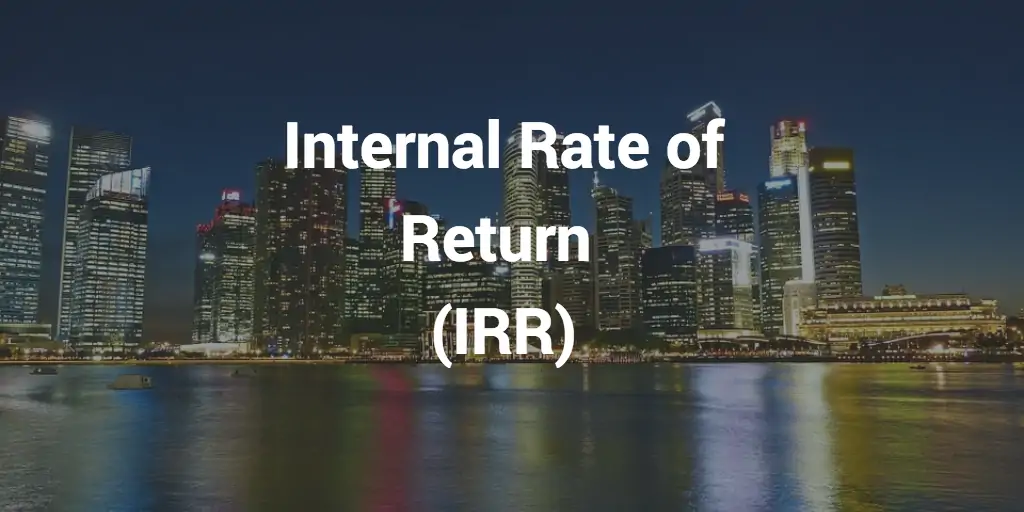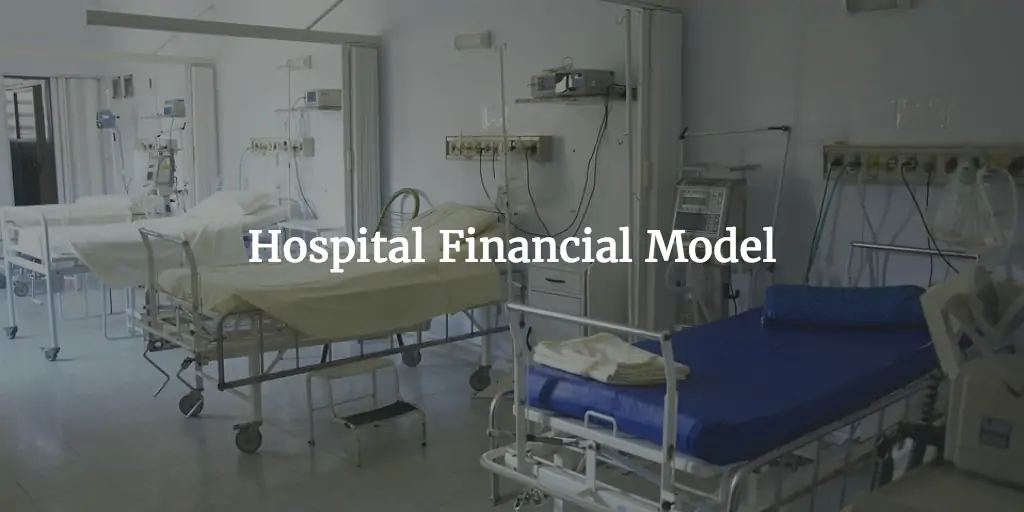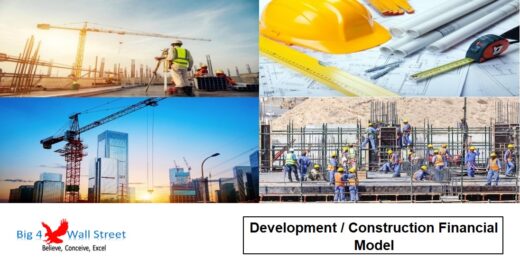How to Prepare a Financial Feasibility Study?
Table of Content
- What is a Financial Feasibility Study?
- Why Do We Need a Financial Feasibility Study?
- When to Do a Financial Feasibility Study?
- What is the Difference between a Business Plan and a Financial Feasibility Study?

This article explores how to prepare a financial feasibility study. We will first explain what is a financial feasibility study, why we need one, in which situations to prepare one, its importance, and who typically prepares such a study. Furthermore, we will also explain what other types of feasibility studies exist and how they are connected to making smart financial decisions.
The article will explain the main elements of a thorough financial feasibility study and suggest a process when preparing such an analysis. Our goal is that after reading this article, you will know everything you need to know when preparing your next financial feasibility study.
What is a Financial Feasibility Study?
A Financial Feasibility Study is a certain type of study conducted to assess the financial viability of a new investment project. To assess this, we will have to develop financial projections which should base on well-researched assumptions. These financial projections are then used to determine if a new project can generate sufficient returns to primarily satisfy the requirements of capital providers such as banks or investors.
For the purpose of this article, we can use the following definition of financial feasibility:

A financial feasibility study explores aspects such as the total investment costs required to do such a project. It analyzes the ability to generate income, profits, and cash flows by preparing detailed financial projections about revenues, costs, profits, and cash flows.
Financial viability is determined after evaluating the financial attractiveness and a project’s financial risks. Therefore, a project needs not only to cover its cost but generate a decent return so that it becomes financially attractive to invest in by investors or banks.
A financial feasibility study can come in a variety of forms. It can be in a form of a written report, a presentation, or a spreadsheet model. However, in most cases, transparency on the calculation is required. Therefore, a spreadsheet model will come in very handy as it allows us to understand the detailed calculations made for such an analysis.
Why Do We Need a Financial Feasibility Study?
So, why do we need to do a financial feasibility study? Wouldn’t it be sufficient to just go without one, especially if we know the market very well?
Many new investment projects require a significant upfront investment. When asked to invest in such a project, any capital provider will have their money at stake, and they will naturally be worried that the proposed investment might not work or investors might even lose all their money.
Therefore, before spending any money, we will need to find out and analyze thoroughly if a project makes financial sense – or, in other words – if a project is financially viable. We need to assess if a project can create sufficient returns to compensate capital providers for the risk.
The focus of the study’s financial viability analysis is to evaluate the financial prospects of a new project. We will need to evaluate the required investment amount, the start-up costs, net working capital requirements, projected production and sales volumes, expected prices, revenues, and variable and fixed costs and seek to project the estimated future profits and free cash flows of a project. Based on the forecasted financials, we will now be in a position to calculate select financial metrics, such as the payback period or the internal rate of return, to assess the financial attractiveness of the proposition better
Furthermore, a financial feasibility analysis allows for a solid check if the proposed project leads to a sustainable business model. Something very important to avoid losing money or becoming obsolete in the near future. Financial feasibility analysis also seeks to evaluate how much debt financing can be obtained from banks or other lenders. Considering all these points allow us to obtain a conclusion about whether such a project is financially doable – viable – or not.
Apart from the potential upside, we will also need to understand the (financial) risks involved and determine if the offered return by the project will be sufficient to compensate for such risks.
A financial feasibility study should help prepare the groundwork for the following situation:
- Evaluating the financial projects of a new investment opportunity
- Assessing the profitability and financial viability
- Making rational instead of emotional investment decisions
- Recommending to go ahead or decline opportunities
- Finding risk-mitigation strategies
- Getting approvals from boards or investment committees
- Serve as a basis for capital raisings

The focus of a feasibility study lies in studying the financial prospects for a project which does not exist yet, which is new. Therefore, not all assumptions that might be required are available yet and first need to be carefully studied where they could lie within.
Conducting such a study seeks a solid understanding of the financial implications of starting a new project. This also leads to do a more solid understanding of the risks involved and, therefore, allows to identify of risk mitigation strategies as well.
When to Do a Financial Feasibility Study?
When do we exactly require a financial feasibility study? As outlined above, whenever a large amount of capital is required, a solid justification should be provided under best management practices.
Often, a thorough financial feasibility study is required by capital providers (investors or banks) to serve as a basis for financial decision-making. In such cases, the quality of the study decides the fate of such a project. Preparing a thorough financial feasibility study demonstrates professionalism and preparedness to mitigate the risk enhancing trust among investors.
Therefore, typical situations that require to prepare of a financial feasibility study are the following ones:
- When you are unsure if a project will lead to financial success or not, a thorough financial analysis will be required for something which does not exist yet.
- When a large investment amount is required, that can expose a company or investor to great financial risk or even the potential loss of his investment.
- When suggesting complex projects whose financial implications are difficult to understand.
- When seeking to find ways to mitigate financial risk, studying a project in very detail often allows preparing for such risks and even find ways to mitigate them.
- When you don’t want to rely on the opinion of somebody and seek a second opinion from somebody else.
- As a basis for financial decisions taken by the Board of Directors or an Investment Committee.
- When capital providers ask for thorough documentation to justify their decisions.

Whenever you deal with the question of how to finance a new project with large amounts of capital, be prepared that the involved investors or bank will expect you to prepare a thorough financial feasibility analysis.
What is the Difference between a Business Plan and a Financial Feasibility Study?
You might now think that a feasibility study sounds very similar to preparing a business plan. Well, not exactly. There are some differences in terms of the approach and focus when you consider their objectives. The following illustration explains the main differences between a business plan and a financial feasibility study:

The Financial Feasibility Study focuses on the Financial Viability and Risks
Financial feasibility analysis seeks to prepare financial projections based on well-researched and educated assumptions, mostly for new projects to be built. The objective here is to evaluate the financial attractiveness but also the risks of a new investment opportunity.
Especially capital-intensive projects, such as new infrastructure projects or manufacturing plants, require a careful financial feasibility study because they require millions of dollars of investment by banks and investors. Those capital providers want to see a responsible approach to managing their funds and want to avoid at all costs to lose their money.
They want to study the project themselves, and the easiest way is to ask the project promoters to present such a study which they can now simply review and critique. Many projects rely on important assumptions, e.g. the assumption that a certain amount of electricity can be produced and sold by a wind farm. So they want to understand how the electricity will be produced, how much wind will be required, how the electricity will be generated and distributed to the electricity grid, and who pays for the electricity.
There are many risks involved in such projects, starting from the choice of location and wind generation potential to the credibility and the financial situation of the electricity distributor who will purchase all the electricity produced. As the name implies, the focus here lies on studying all the important aspects of such a project and coming to a conclusion about whether this project is financially attractive. Therefore, a financial feasibility analysis looks at a project mainly from an investor’s point of view.
The Business Plan focuses on Traction and Execution
Business plans focus mainly on Execution and lay out the plan on how the business should be run and grow. Business plans rely on the excellence of execution which requires somebody to assume responsibility and take ownership. Therefore, a business ideally should be prepared by the Entrepreneur(s) wishing to launch a new company. Business plans where there is no team behind typically have less value.
A business plan should be prepared for any new Startup project, also less capital-intensive projects such as developing a mobile app or launching a service-based business. For those businesses, the initial investment required is manageable. Sometimes only a first prototype is required to test the market and see if there is demand for a new product and service or not.
The success of the new business depends now if traction in the market can be obtained. Traction means demand from real customers asking to be served and are interested or have even already bought the products of the new Startup as first buyers. Execution typically will focus on gaining such traction and seeking ways to grow the business. Therefore, marketing, in many cases, will be the key to success.
As less capital is required, investors at this stage will only invest small amounts, typically first as seed investors and larger amounts only later once traction is proven. Therefore, a desktop study is less relevant as it all comes down if customers are demanding a new product or service introduced into the market.
What are the similarities between a Business Plan and a Financial Feasibility Study?
Often, a financial feasibility analysis can serve as the financial plan within a business plan in its short form. The financial plan should answer the same or similar questions to be answered by a financial feasibility study. When inserted as a financial plan, it all depends on the quality of such a plan. Good business plans, in any case, will also come with good financial plans.
In our view, financial feasibility can be done before or after preparing a business plan. The focus of the feasibility study lies more on reducing risk because there will be much capital invested which requires careful analysis and decision-making in order to spend money wisely. The focus of the business plan typically lies on execution and marketing, where the financial part is just one element (but a very important one) among the whole plan.
The Importance of Financial Feasibility Study: Avoiding Unnecessary Risk-Taking!
As Warren Buffet famously once said, as an investor, there are two rules to live by:
“Rule Number One: Never Lose Money. Rule Number Two: Never Forget Rule Number One”, Warren Buffet
This is more or less what a financial feasibility study seeks to achieve, protection against unnecessary mistakes or bad investment decisions. Studying the financial feasibility helps investors to make rational and – in theory – better decisions as they are not influenced by emotions and, therefore, should avoid unnecessary risk-taking.
There are three groups of stakeholders that typically require financial feasibility studies. They mainly for purposes of enhancing their decision-making process or preparing the required documentation for capital providers for fundraising exercises:

Startups and Entrepreneurs – Whenever a new capital-intensive project is started that involves much capital, like a solar park or a new ethanol plant, a financial feasibility study should be conducted to figure out if such a project can generate sufficient returns to cover its costs and compensate capital providers for the risk.
Existing Companies – Whenever existing businesses are looking into an expansion that requires significant capital investment – like buying a new machine to automate certain production processes – the question of financial feasibility comes up. In such cases, typically, the company’s management prepares such a study and presents the project to the board for approval and/or banks for financing. The financial feasibility study serves as an important document to justify the spending of company resources as it can demonstrate that there will be a financial return from it aiming to maintain or enhance the value of a business.
Investors – For new projects, many times, companies are not formed yet, and it will be the task of their Promoters to prepare the financial feasibility analysis. The such study then can serve as a basis for whether to start and fund a new project or not. The study will also be required to bring co-investors and other capital providers on board and demonstrate that they can make a profit with it. Their investment and credit committees will appreciate having a solid financial feasibility study that can serve as a basis for any new investment.
The Main Types of Feasibility Studies

Apart from financial feasibility, most projects will also have to consider other aspects of feasibility first. Financial Feasibility is just one – but most of the times, the most important – feasibility aspect of a project since, in business, most decisions are made with the goal of enhancing profits and company value.
Important to note here is that all other types of feasibility studies will need to be completed first before the financial feasibility study can be finalized. The reason is that those studies will contain the relevant assumptions needed for the financial feasibility calculations. Assumptions related to volumes should be derived from the market feasibility study, prices from a pricing study, costs from a technical feasibility aspect and resulting costing study, and so on.
Sometimes, we start a financial feasibility analysis without completing all other feasibility studies. In that case, this means our assumptions are not fully solid enough, and for that reason, our analysis, in fact, will still be a financial pre-feasibility study.
Many times, financial studies are sold as financial feasibility studies. However, when reviewing them in more detail, it actually can turn out that the level of analysis still leaves many questions unchecked and assumptions unverified. In such a case, we need to keep requesting the completion of all required other feasibility studies so that our financial analysis becomes more solid.
Market Feasibility Study
The study of market feasibility aspects helps to identify the relevant target market segments, their characteristics, competitors, market drivers, supply and demand situation, the expected addition of future supply capacities, the development of future demand, and gaps in the market. The objective of a market feasibility analysis is to assess whether it is feasible to sell a new product to the market and whether we think the market can absorb such products. Many times, prices are included in a market study, but for our purpose, we leave those for a separate pricing study.
Market Segments
Market segmentation is the process of breaking down a large market into different segments by analyzing the profiles of typical buyers. A basic segmentation would be to separate a market into private consumers and business customers. Many times, even more, detailed market segments can be identified, all with their distinct characteristics and very different motivations for purchases.
The following illustrates explains this based on the market of lubricant oils:

As you can see, the market for lubricant oils can be split into at least 4 different market segments:
- Cars – These are mostly private cars that are in need of a regular change of lubricant oils. The market size here mostly depends on the size and structure of the population, the percentage of car owners, and climatic and road conditions, which determine the required frequency of changing lubricant oils. E.g., roads in a country like Costa Rica are famous for having many holes and suffer from poor paving.
Cars driving on the roads in Costa Rica will have a higher consumption of lubricant oils than when driving on nicely paved streets somewhere in Western Europe. A lubricant manufacturer will have to sell via chains of garages, lubricant stores, or other retailers. - Industry – Industrial companies that operate heavy machinery that requires lubricant oils. A good lubricant oil can enhance performance and prolong the lifespan of machines that are very expensive to replace. Also, large customers follow a structured purchasing process, preferring to buy large quantities in bulk and manage their inventories.
Here, sales are made either directly to industrial customers or indirectly via specialized distributors. Therefore, selling lubricant oils to an industrial buyer is very different from selling the same product to a private car owner. - Farming – Farmers are in need of lubricant oils for their heavy-duty tractors. The type of lubricant oils can be very different from the normal car segment as the machinery is different as well. Farmers tend to buy from specialized stores, so the distribution and sales of lubricant oils need to be set up accordingly.
- Shipping – The shipping industry forms another market segment for lubricant oils. Ships operate internationally, and their engines need to run reliably for a long period of time, as every delay leads to additional costs, which sometimes cannot be recovered with tight shipping freight rates. For shipping, it is very critical to select the best grade of oil as it is tasked to lubricate and cool down the engines.
The lubricant oil prevents wear and tear and contributes to the longevity of the ships. It also minimizes the heat generated from the bearings of the engine, making it run smoother. Here again, the distribution and sales of lubricant oils need to be organized separately for this buyer segment by addressing their needs.
Competitor Analysis
Competitor analysis entails investigating the main rivals to learn more about their profile, products, sales, and marketing strategies. Performing a competitor analysis typically allows for obtaining a quick understanding of the market and its drivers better.
Competitor analysis is not very difficult to do when we focus on two simple questions: What are the strengths and weaknesses of each competitor? Below is an example of a simple competitor analysis for a ballpen producer:

We can now also expand the analysis and drill down into more details by comparing additional features of their products or key data such as the number of employees, sales, customers, products, website visitors, etc. There is no limit to that, and it depends on the industry which items are relevant to compare.
Supply and Demand Analysis
The study of how buyers and sellers interact to establish transaction prices and quantities is known as Supply and Demand Analysis. The objective is to understand better the supply and demand side of a market segment and its drivers.
Supply Demand Analysis should always be conducted per market segment, as the drivers and motivations can be very different. The idea is to estimate and better understand the factors which will impact future prices on the market.
Supply analysis takes into consideration who can provide the products and how many suppliers are present. While the demand analysis deals with the volume of the demand and whether a new competition will enter the market to meet such demands.
For example, the developer of a new warehousing building project conducts a supply and demand analysis to understand if it’s a good idea to build a new warehouse in a city.

Supply analysis focuses on the available warehouse spaces in different segments such as high-grade (high-ceiling spaces, no pillars, easy to access) to low-grade spaces (low ceilings, difficult to access), the owners of the buildings, vacancies, new building projects in the pipeline and the drivers of supply.
Demand analysis focuses on understanding the profiles of companies requiring warehouse spaces, their reasons, their price sensitivities, demand high-grade and low-grade spaces, trends, and expected changes in demand.
Once we know both – the supply and the demand situation of the market – we can better estimate the implications for future demand and prices for the market of warehouse spaces in the city.
Technical Feasibility
Many times, we require to build something new before we can start production, such as a new building, plant, or machine. Therefore, a technical feasibility analysis will be required to study the exact technical implementation and how to build something. Technical feasibility can also apply to production processes or the use of technologies.
In terms of a new manufacturing plant, a detailed study will be required of the required spaces where to put the required machines for the production process, the flow of materials and goods in the most optimal manner, how to organize the storage space, etc. Also, questions related to the technical infrastructure, especially the required supply of electricity and natural gas, need to be answered.
Furthermore, new building projects should also consider the impact of future maintenance costs, requiring a total cost analysis in most cases. It comes all down to many details, which then lead to the exact specifications of what needs to be built.

Technical feasibility can also refer to software or a mobile app to be built. E.g., a new mobile app for iOS or Android will need a technical concept of how the app will look like, what screens to show, how the database needs to be structured and how the mobile app can interact with data stored on the web and similar.
The technical concept will then define the required works, which can then be used to estimate the costs. Many times, tight cost budgets pose limitations to technical concepts, so they have to be adjusted to come up with a minimum viable product first in order to reduce costs.
Environmental Feasibility
Environmental feasibility analysis seeks to understand the implications of a new (building) project on the environment. This includes topics like pollution but also wildlife or natural ecosystems. Often, environmental feasibility studies are required by law but can also be seen as a way to protect a company’s reputation and contribute to a better environment.
For instance, see below the picture of one of the locks of the Panama Canal. All ships need to be lifted up and down to bridge the difference in altitude between the Atlantic and Pacific Oceans. Every time a ship passed through the locks, freshwater from Gatun lakes leaked into the sea.

In addition, ship traffic can lead to pollution, noise, and erosion of the riverbank. Therefore, a project like the Panama Canal has a huge impact on the environment in terms of freshwater consumption, pollution, wildlife, and eco-system affecting the lives of the people in Panama. This is just one example that requires an environmental feasibility and impact study.
An environmental feasibility study will seek ways to build a project in a way that minimizes the impact on the environment, complies with applicable laws and regulations, and seeks to mitigate any remaining effects. This can lead to additional costs for a project which need to be taken into account.
Social Impact Feasibility
The effects of a project on society can be studied via a social impact feasibility analysis. In order to comprehend the scope and extent of the project’s social repercussions, social impact analysis seeks to identify the effects of a project in terms of poverty, employment opportunities, and society in general.
For example, mining companies setting up operations in remote areas can often create a significant number of new jobs.
The question now becomes how the local population can benefit or if only expatriates with special skills will be employed. Sometimes, local municipalities will make it a condition that such a project has to employ a minimum number of people from the local population and support local events or activities.

Creating new jobs can also lead to a boom in the local economy, as well-paid employees will be happy to spend their money on local restaurants and stores. However, in case those employees live in segregated camps, there won’t be much effect on the local population. Therefore, social impact analysis is key to gaining support from local authorities for new projects.
Pricing Study
While some projects will be able to sell all their produce to a single main buyer via an off-take agreement, other projects will have to sell their produce to a variety of different buyers. Let’s look at each case separately.
Offtake Agreements
A 100 Mega Watt (MW) solar park which produces electricity from solar power sells all the electricity to a single buyer, the local electricity distribution company. Therefore, what matters is to negotiate a Power Purchase Agreement (PPA) to achieve an off-take of the production at a guaranteed price over a defined term (e.g. 20 years).
Such a solar park should only be built if such a PPA is in place to basically remove any risk that the electricity cannot be sold. The electricity market is characterized mostly by nearly monopolistic situations, strong regulations, and interference from politics. Therefore, protection is needed. In this case, the pricing study can be replaced by directly negotiating the price in an off-take agreement.
Pricing Analysis
The situation will be different if you are dependent on selling your products to a variety of different buyers on the open market. In this case, you will need to study the market in detail (see market study) and also analyze the impact on future prices. An example is a large real estate development project, where you might plan to develop and sell a number of new apartments and houses or even rent some. In that case, you will have to study the prices of residential units to be sold by other real estate projects in the market and obtain a view of what realistic market prices will be.
Phasing Plan
A phasing plan defines when to build what and splits the development plan into different phases. The following example illustrates this:

For example, a large real estate project plans with a 10-year project duration. Phase 1 consists of site inspection, preparation of the land, demolitions, and landscaping. For Phase 2, the building project kickstarted. The objective of this phase includes building the common areas together with building the first set of condominiums. Phase 3 will build additional condominiums and construct a new shopping mall.
From a financial perspective, the main idea of a phasing plan is to reduce the upfront investment required and the risk of a project by starting the project in phases. Often a phasing plan also serves to first validate demand before producing larger quantities. Another benefit is that profits obtained from phase 1 often can be directly re-invested into the next phases. This reduces the amount of financing to be raised from third-party sources.

Costing Study
Once you have a technical concept and a phasing plan ready, we need to translate these concepts into a cost estimate. We can do this by either requesting quotations from the respective suppliers or talking to industry experts for their best guess estimation of how much this should cost.
Important here is to list all the budgeted cost positions to obtain a full view of the total costs. We also need clarity on how the setup or construction of a new plant or buildings will take to allocate those costs and a timeline that specifies the cost spending schedule.
When costs are spent over the course of several years, we also have to consider the effects of cost inflation. If the annual inflation rate is 3.0%, then any costs spent in later years will have to be adjusted up by the inflation index.
So often, our cost estimation actually has two estimations:
- Real costs, which are based on current prices
- Nominal costs include the effects of annual cost inflation by taking into account our cost spending schedule, phasing plan, and estimated inflation rate(s).
The following examples show the estimated costs of building a new manufacturing plant:

As you can see, we can obtain a cost estimate from specialized consultants or via quotations from suppliers at today’s prices. However, these costs might actually be too low as they typically do not include inflation. The task of the financial feasibility analysis now is to define the project timeline for when these costs are expected to occur and how they need to be adjusted for inflation depending on the project’s timeline.
Also, each cost position is impacted differently by inflation. A cost item occurring in the very near future, such as land purchase, should basically be at the real costs. At the same time, construction expenses over 2-4 years are really impacted if the annual inflation rate is 2.0% – 3.0%. The longer you project into the future, the more important it is to count for inflation.
Other Feasibility Aspects
The list above is by no means complete or final. Depending on the project, additional feasibility aspects might need to be studied. These can e.g. include also traffic studies, the study of logistics flow, geological exploration of mineral deposits, technological studies, etc. In case these aspects are relevant to make a project work and lead to financial consequences such as impacting costs or the timeline, they need to be considered as well.
Financial Feasibility
The financial feasibility study is the one that translates the results of all other feasibility studies into financial projections and, based on a thorough financial analysis, determines whether a project is financially feasible or not. This is purely done from a financial perspective when running a financial analysis. We will explain how to do that exactly in the next chapter.
In business, most projects will rely on the result of the financial feasibility study to decide whether to go ahead with a project or not. Only the financial feasibility study can tell you if a project is profitable and how the investment costs can be translated into profits to create value. This is still the number one criterion used by shareholders to make decisions, especially when it comes to investing a large amount.
The main problem for a new project is that the financial feasibility study requires good assumptions. Typically, this is very difficult as the new business to be established by definition has no track history or reliable data we could rely on. Therefore, we have to look into the other feasibility studies for assumptions we could use based on market research (e.g. volume and price assumptions), technical study, and cost study based on industry experts (for cost assumptions).
Important to note here is that the financial feasibility study can only be completed once all other studies are done. The other studies need to be prepared as a prerequisite to a feasibility study as they will tell you the volumes, price, and cost assumptions to take into account.

Please note not every new project requires performing all types of feasibility studies. The type of project determines which feasibility studies need to be prepared. This also means there can be other types of feasibility studies depending on the industry and case not mentioned here. In case not all required feasibility studies are completed, then also our financial study needs to be viewed as pre-feasibility.
The one thing we have to remember is that the financial feasibility study can only be completed once all other studies are done and rely on the assumptions researched by other studies for its projections.
The 12 Elements of Financial Feasibility
A financial feasibility study typically consists of various important elements, which together allow us to decide if a project makes financial sense or not. Before we go into the elements of financial feasibility, we need to recap what type of questions our financial feasibility study needs to answer:
- What are the total project costs?
- Multi-year projections for Income Statement, Balance Sheet, and Cash Flow Statement
- How profitable will that project become?
- Can the project cover its cost of capital?
- How much funding will be required?
- How much debt financing can be obtained from banks?
- What will be the return for shareholders?
- What are the most likely scenarios, and where are the risks?
A project is financially feasible when the project can create a profit, cover its cost of capital and compensate all capital providers with sufficient returns for the risk they take.
As you can see from the questions above, basically, the task is to develop financial projections from which we can run all required calculations to determine if a project is financially feasible or not. In order to come up with such projections, we need to develop them based on a set of assumptions.
Therefore, our financial feasibility analysis should ideally investigate and clarify the following elements:
- CAPEX
- Revenue Projections
- Cost Projections
- Net Working Capital Requirement
- Fixed Asset and Depreciation Schedules
- Debt Financing
- Tax Analysis
- Financial Statement Forecast
- Financial Ratios Forecast
- Free Cash Flow Forecast
- Uses and Sources of Funds
- Financial Metrics
- Break-Even Analysis
- Scenario analysis and Risk Identification

CAPEX
A financial feasibility analysis needs to identify the total capital expenditures (CAPEX) required to start a new project. CAPEX might e.g., include the costs of building a new factory consisting of the costs to purchase the land, construction costs for a new factory building, warehouses and administrative areas, planning and costs for architects, purchasing costs for new machines, vehicles, certification and installation costs. CAPEX analysis also needs to define when which parts of the CAPEX items are going to be spent and how eventual cost increases due to inflation are accounted for.
Projected Revenues
Revenue projections should start first with the identification of the expected sources of revenue. E.g., the sale of manufactured products, maintenance service contracts, consulting and licensing fees of the technologies. Typically, businesses might have different sources of revenue.
What we also need to define is the lifespan of our new plant. E.g., we can expect a solar park to operate between 20 to 30 years, and this means that within that time, the investment needs to be fully paid, and a profit needs to be generated. After the end of life is reached, we can either stop counting the revenues, or we can apply a terminal value model instead.
For each source of revenue, the expected sales and production volumes need to be forecasted. For this, we need the results of a reliable market feasibility study which should tell us what the market needs and how much volume could be sold.
Lastly, we then also should take a view on obtainable prices, preferably backed up by a solid pricing study as part of our feasibility analysis. The pricing outlook needs to reflect the supply and demand mechanics in the market and the likely effects on prices over the next months and years. Seasonal effects also need to be taken into account, in case of prices fluctuate during the year, as well as the effects of likely price inflation over the next years.
Cost Projections
The next element our feasibility analysis needs to study is the ongoing costs that will be generated once the operation is started. Ongoing costs can be split into direct costs and operating expenses (OPEX).
Direct costs only occur when we start production, they are mostly dependent on sales volumes. In case sales would stop, then no direct costs will occur. Examples of direct costs are costs for raw materials, electricity consumption for production machines, direct labor costs, packaging, and shipping costs. Here we need to ensure that our forecast is linked to the sales volumes, e.g., by using assumptions such as costs in $/ton or costs expressed as a percentage of sales.
Operating expenditures are mostly indirect costs, they cannot be directly attributed to the sales volumes, and some minimum costs are required to run the operations. They can include indirect labor, repair & maintenance, fuel, etc. OPEX is typically forecasted line by line in most cases so that the budgeted costs can be understood.
Important to note also, when we plan something, we should take a conservative view to avoid getting into unrealistic outlooks. All our assumptions and the sources used in our financial feasibility study need to be made fully transparent.
Once we have calculated the costs, we can then also determine our profit margin by deducting all ongoing costs from the revenues on a yearly basis and e.g., looking at the projected EBITDA margin.
Net Working Capital
Net Working Capital is a topic that often gets forgotten. Net Working Capital for basic financial planning purposes consists basically of Receivables + Inventory – Payables. Net Working
In general, the more net working capital the company has, the better equipped it is to meet its immediate responsibilities. Businesses should always have access to adequate funding to pay all of their expenses for a full year.
The fact is, whenever you start a business, a certain level of net working capital is required in order to account for the time invoices are not paid yet, inventory sits in our warehouses, and suppliers demand payment. We can mostly use Days Receivables, Days Inventory, and Days Payables assumptions to estimate the required Net Working Capital levels.
Net Working Capital will need to be built up once operations start. This will typically lead to an additional investment required, which needs to be accounted for in our uses of funds table and will require financing as well.
Fixed Asset Schedule
Capital expenditures relate to the purchase of fixed assets which become activated on the balance sheet. Cumulated CAPEX forms the Gross Fixed Assets. We can get a clearer picture of this balance sheet position when forecasting a fixed asset schedule that takes into account yearly depreciation. This is also useful as it reminds us that we need to think about the useful life of these assets and when they need to get replaced, which leads to so-called maintenance CAPEX (CAPEX to be spent on maintaining the operations of the plant in the long run).
Building a CAPEX schedule requires us to forecast depreciation which typically requires assumptions over the time period assets shall be depreciated and the depreciation method. We can keep things simple here by assuming straight-line linear depreciation over an asset’s useful life.
Annual depreciation is tax deductible, so the depreciation schedule impacts the profit before taxes in our tax analysis. On the balance sheet, we can obtain the Net Fixed Assets (Gross Fixed less accumulated Depreciation). By doing this, together with our analysis of the Net Working Capital required, we can obtain a good idea of how the company’s balance sheet will look on the asset side.
Debt Financing
Our financial feasibility analysis should also provide a statement about the likely debt financing to be obtained for our project. For this, we need to analyze the available fixed or other assets which could serve as collateral to a lender such as a bank. We also need to obtain a view of how much banks would charge in terms of an interest rate for providing financing of our assets and what would be the likely repayment terms.
This analysis requires some know-how about interest rates and credit terms. Often one will have to speak to a credit manager at the bank to validate the requirements for obtaining financing, as especially a bank will be very cautious about financing the operation of a new Startup business. Often, a parent company or investor might have to give additional guarantees to the bank (recourse loan). In that case, the financial feasibility becomes conditional to one shareholder providing such guarantees. If so, this would need to be clearly stated in the financial feasibility analysis.
The result of this part of the analysis is clarity of how much debt financing can be obtained from banks and at what terms during which period (until the loan needs to be repaid). The debt schedule will tell us the resulting interest payments at least on a yearly basis and impact the cash flow statement with drawdown and repayment schedules.
Tax Analysis
Especially for large projects, taxes can become a large cost item. Many times, there are also industry-specific tax incentives available in form of tax credits or holidays as governments seek to motivate and support the creation of new businesses that can create additional jobs. Many times, new tax laws are in the making, and it might not yet be fully clear if tax incentives will be available or not.
Tax analysis starts with the normal income tax rate and then seeks to analyze the tax rules in more detail and how likely tax incentives can impact this cost position.
Sometimes new projects create complicated structures of special-purpose vehicles to optimize taxes. In such cases as well, the effects of the intended legal structure need to be analyzed as well, many times with the help of specialized tax consultants.
Financial Statement Forecast
Why do we need a financial statement forecast? The main reason is to enhance the forecasting quality when preparing a Three Statement Model consisting of a forecasted Income Statement, Balance Sheet, and Cash Flow Statement. For projects with finite lifetimes, we can prepare the forecast for all forecast years. We need at least 5 forecast years for projects with an infinite lifetime.
An Income Statement forecast allows us to understand profits at the level of Gross Profit, EBITDA, EBIT, and Net Income. Having these items calculated allows us also to compare the respective profit margins with similar companies and to calibrate our forecast better. The Balance Sheet can be built from our forecasted Net Working Capital balances, Net Fixed Asset Schedule, Debt Schedule, and by building a Cash Flow Statement Forecast to forecast the yearly cash balance.
Having a forecast with all financial statements allows us to calculate the future projected financial ratios better. For those, we need mostly Income Statement and Balance Sheet forecasts. Furthermore, our cash flow statement will help us to calculate how much the cash balance hopefully can increase each year and how much cash flow would be available after servicing the debt to be distributed to shareholders.
Often shareholders will want to know if this is a project which can be expected to pay dividends in the future. This can also be an attractive argument for investors who are looking to receive a steady cash flow stream in the future.
Financial Ratios Forecast
When we want to understand financial statements, we typically analyze the financial ratios. Financial ratios can be grouped as follows:
- Liquidity Ratios
- Profitability Ratios
- Efficiency Ratios
- Bank Ratios (or Leverage Ratios)
- Growth Ratios
Please refer to this article, financial ratios analysis, and its importance, for more details on what ratios are referred to and how to calculate them.
Liquidity ratios allow us to understand if we can expect the company to meet its short-term financial obligations and also to obtain a better picture of how much excess cash can be distributed from the company.
Profitability ratios, such as the Return on Invested Capital (ROIC), allow us to understand better if our forecasted profitability is realistic when compared to similar companies and how attractive a company can turn the invested capital into profits.
Efficiency ratios can tell us how efficiently the company’s assets should be used and even give guidance for management during the setup of the company.
Visibility on future bank ratios allows us to prepare the negotiations of a term sheet for obtaining financing from a bank and assess the ability to service debt from the operating cash flows.
In general, financial forecasts that calculate the expected financial ratios lead to better forecasting quality than when only looking at the direct cash flows.
Free Cash Flow Forecast
Several key metrics, such as the Internal Rate of Return (IRR) or the Net Present Value (NPV), require us to develop a free cash flow forecast. Unlike the Cash Flow Statement, which includes distributions to capital providers, a free cash flow forecast can tell us how much money – free cash flow – a company requires and can generate.
For financial analysis, cash is king! Unlike Net Income, cash flows are not distorted by accounting choices and, therefore, should not be subject to manipulation.
We differentiate two main types of Free Cash Flows:
- Unlevered Free Cash Flow (Cash Flow to Firm): assumes cash flows “as if” the company would not use financial debt. This means all tax benefits of using financial debt need to be removed.
- Levered Free Cash Flow (Cash Flow to Equity Shareholders: These are the company’s free cash flows after deducting financial debt. Please note that these cash flows are before deciding to pay dividends or to keep the cash on the company’s balance sheet.
In case a project expects proceeds from the sale of the company or an exit value, a terminal value have to be taken into account at the end of the forecast period as well.
Uses and Sources of Funds
The next element we need to clarify is the total funding amount required for this project, how the intended financing structure will be and what the money will be spent on. We can do this by showing the uses and sources of funds table.
The below example explains the structure of such tables:
Uses of Funds:
– CAPEX
– Net Working Capital
– Operating Expenditures during Startup Period
– Cash Reserve
Sources of Funds:
– Financial Debt
– Equity Financing
We need a financial model which calculates the funding required. Whatever amount cannot be obtained from banks need to come from investors in form of equity financing. The money raised will be spent as per the specified breakdown in a uses of funds table, which typically includes all the capital expenditures required to get started, the required net working capital to provide the business with working capital, and the costs during a business’s startup period as well as a cash reserve for unforeseen items.
Financial Metrics
In order to determine the financial feasibility, we need to evaluate if the project is financially feasible at different levels. We differentiate the following levels:
- Project/company level: Does the project makes sense without considering the effects of applying a certain financing structure?
- Bank-level: Does this project allow us to raise debt financing from the banks?
- Investor level: Are the expected equity returns attractive to investors so that they should be interested in investing in?
In order to determine the financial feasibility, we need to calculate select financial metrics at each level and analyze if those metrics indicate if the project is financially feasible.
At the bank level, the debt schedule should tell us already, provided it contains a reasonable proposition to banks. For the Project and Investor level, we need to use one or several financial metrics to indicate if our project appears feasible:
Payback period
The payback period is calculated based on our free cash flow forecast and tells us how many years it will take to recover the costs of our initial investment. We can also calculate the payback period at the level of investor cash flows as sometimes this is easier to understand for investors.
Internal Rate of Return (IRR)
The Internal Rate of Return (IRR) tells us, based on the free cash flow forecast, what is the annual implied return. Please note, in order for the formula to work correctly, the free cash flow forecast needs to be negative at the beginning and show positive cash flows later on.
By definition, the IRR is the discount rate that leads to a Net Present Value of zero. Ergo, we can also compare the IRR to the Cost of Capital to quickly assess how attractive an IRR appears. The IRR considers the time value of money, meaning positive cash flows early on lead to a better IRR compared to a project where all positive cash flows occur years into the future.
Therefore, typically reacts positively to high exit values in the near future but might, in some cases, underestimate the long-term attractiveness of steady returns.
In practice, IRR is the number 1 financial metric used in investment evaluation among finance professionals. IRR is also frequently used at the investor level as the metric can be directly compared to the alternative of getting returns as a shareholder when investing in stocks at the stock market.
Net Present Value (NPV)
Another metric to consider for financial feasibility is the Net Present Value (NPV). The net present value discounts the free cash flow forecast (including the initial investment) at the discount rate to today’s value. If the NPV is positive, it would argue that shareholder value can be created. NPV is more used in valuation analysis and less in investment evaluation as here we are more interested in returns than value.
However, NPV is very useful to calculate as well as the size of a large project leads to a higher NPV than a small project with similar returns. We wouldn’t notice when only looking at IRR. NPV is mostly applied to the unlevered free cash flows and less to the levered free cash flows (as it would require the cost of equity to be used as the discount rate in that case).
The below graphic summarizes the comparison of these three key financial metrics, which are often used in the financial feasibility analysis.

Which metrics should you use? From a financial analysis point of view, you should calculate all of them as each metric can give you different insights and indicate the strengths and weaknesses of a project from a financial point of view.
In practice, companies will have preferences and mostly rely on one metric, e.g. the IRR, and require such metric to exceed a certain hurdle rate. This ensures that the company will allocate its resources only to the most promising projects enhancing its chances of creating value for the company and shareholders.
Break-Even Analysis
Another great feature but many times viewed as optional is a Break-Even Analysis to know how many items need to be sold so that all costs can be recovered. Performing such an analysis allows for obtaining an additional understanding of the financial risks of a project and preparing for such a scenario.
Therefore, we need to run a separate calculation based on our cost assumptions and prices, how much volumes need to be sold in order for the profit (e.g., at EBITDA or EBIT level) to be zero.
Scenario Analysis and Risk Identification
Once our analysis stands, we need to be aware that we just analyzed one possible scenario. We can call this the base case. Assumptions, by definition, are estimates only and will not reflect reality as they are not actual figures. Therefore, in reality, the generated results will either be better or worse than what we forecasted.
What we now need to understand is what could be the range of likely scenarios. We can either do this by running a sensitivity analysis to understand better the impact of changes to key assumptions of our feasibility analysis, or we can define alternative scenarios.
We can now simplify this, assuming the assumptions we entered represent a base case. Then, we need to think about what the assumptions would be for a worst-case scenario and how the assumptions could change in a best-case scenario.
For each of the scenarios, we need to calculate the financial feasibility metrics and see when the project would lose its attractiveness from a financial point of view. Such scenario analysis allows us to understand better the range of possible outcomes and the risks of the project.
Once we understand the risks, we can then also double-check if we can find mitigation strategies for reducing those risks. E.g. transforming fixed costs into variable costs, leasing equipment instead of buying equipment, etc.
Financial Feasibility Analysis – May Capital Providers receive sufficient Returns for the Risk?
Financial feasibility is a study that determines the financial viability of a new project or business by studying the financial prospects of a project in very much detail and based on educated assumptions, preferably provided by other feasibility studies. The study seeks to develop financial projections which are used to analyze the financial metrics, ratios, and risks to understand if a project can create sufficient returns to compensate capital providers for their risk.
The following illustration summarizes this:

Financial feasibility analysis serves as a professional basis when evaluating new investment projects and preparing the ground for financial decision-making.
A financial feasibility study is only as good as the assumptions used. Therefore, it is very important also to review the other types of feasibility studies – market, technical, phasing, costing, environmental, social impact, pricing, and others as they are a prerequisite to preparing a solid financial feasibility study. In case the other studies are not yet completed yet, we would still speak of pre-feasibility.
A financial feasibility study should contain all the required details and disclose the calculations on which a conclusion regarding financial viability is reached. For this reason, typically, calculations in form of a detailed spreadsheet are needed in order to provide all the details and full transparency on the calculations.
Financial feasibility analysis also serves to identify the main risks and prepare for eventualities. This helps to avoid unnecessary risks and makes a project more attractive to capital providers. eFinancialModels has many financial model templates available to support businesses in a variety of industries with their financial feasibility studies.
Here are more financial models templates related to Financial Feasibility:




















































